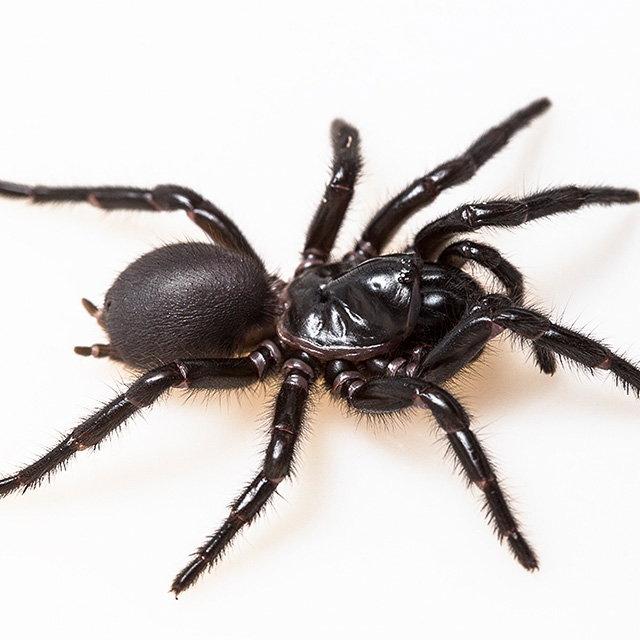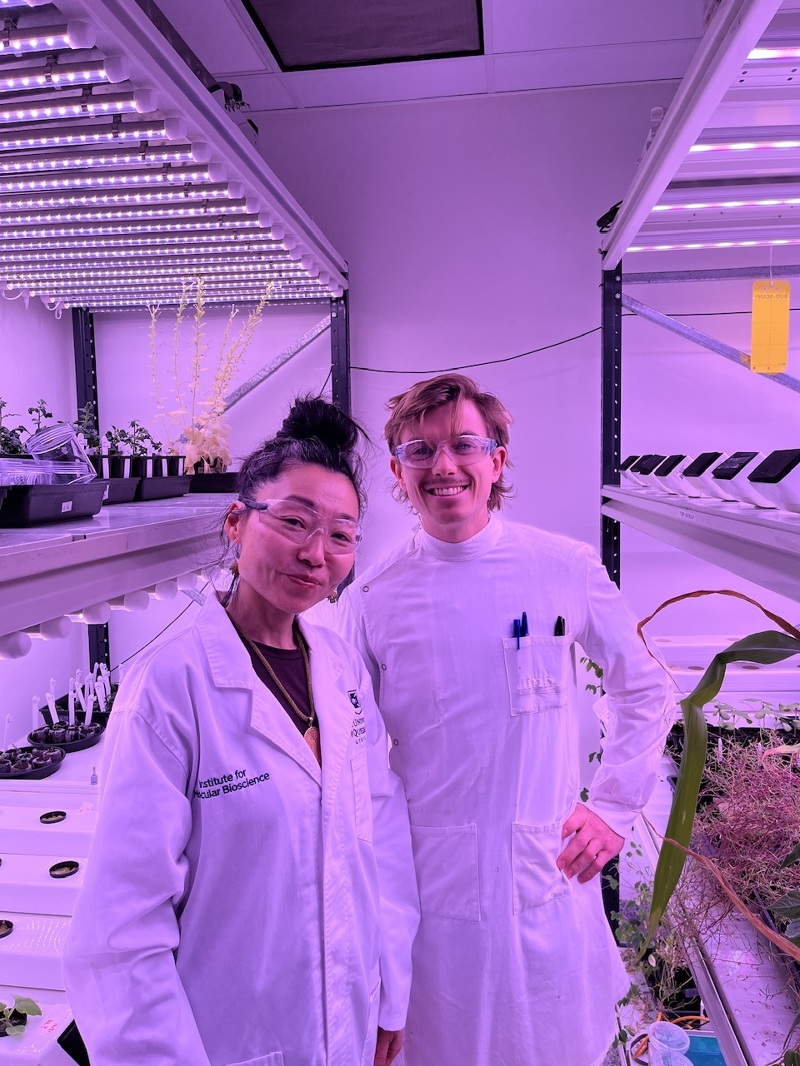Contemporary artist Hiromi Tango has incorporated four IMB references in her new commission Nature Étude (2023). Can you spot all four?
K'gari funnel-web spider


Transforming deadly venoms into life-saving medicines
At UQ’s Institute for Molecular Bioscience (IMB), researchers are using venom from our deadliest creatures to create medicines that could better treat some of the world’s deadliest diseases.
Toxins from venomous animals and plants, which can incapacitate and even kill you, may seem like a strange place to hunt for new treatments for disease.
But the venoms of stinging trees, spiders, cone snails, scorpions, assassin bugs, centipedes and more are complex chemical cocktails of molecules that affect our nervous system – exactly what is needed when developing treatments for neurological diseases and seeking to better understand how pain and other signals are transmitted.
Creature features
Explore how IMB researchers are using venom from Australian animals to find new life-saving medicines.
Petri dish

Transforming the soil beneath our feet into cures
IMB researchers use petri dishes to grow microbes from soil samples sent in by citizen scientists. Soils for Science is an Australian-first program dedicated to finding new medicines needed in the fight against the scourge of drug-resistant infections, which occur when microbes like bacteria and fungi become resistant to the medicines designed to kill them.
Superbugs are becoming increasingly resistant to antibiotics and threaten to cause 10 million deaths per year worldwide by 2050; in Australia, the death rate from antibiotic-resistant bacteria is higher now than 10 years ago.
More than half of all antibiotics available worldwide have been developed from microbes found in soil and nature, and Australia is one of the most biodiverse environments in the world, spanning beaches, rainforests, wetlands and deserts. This vast, untapped landscape is ripe for the discovery of microbes that could be developed into new antibiotics, anti-fungals and other medicines.
Butterfly pea plant and petunias



Transforming how medicines are produced and delivered using plants
Imagine if you could eat a sunflower seed or drink tea infused with the medicine needed to treat cancer or obesity. This might sound like science fiction, but it’s moving towards being fact thanks to IMB researchers, who are transforming plants such as petunias and butterfly pea plants into biological factories that can grow medicines.
Plants naturally produce proteins called cyclotides, which – unlike most proteins – have a circular shape, a stable structure that’s the perfect delivery vehicle for medicines. When combined with regular peptides – short proteins that have great potential as medicines, but lack stability – cyclotides produce molecules that are stable enough to survive the body’s digestive tract and reach their target to start the healing process.
Plant-grown medicines could simplify transport and storage and have increased affordability compared to traditional drug counterparts. Growing medicines in plants is also more sustainable than industrial manufacturing methods, and offers the promise of improving on current medicines.
In short, producing medicines in plants is shaping up as a growth area for the future of health.
Get the latest research straight to your inbox
Sign up to our monthly newsletter to learn about hot topics, science-backed tips, and to hear all the latest news and events from IMB, Australia's #1 research institute. UQ Privacy Policy.
